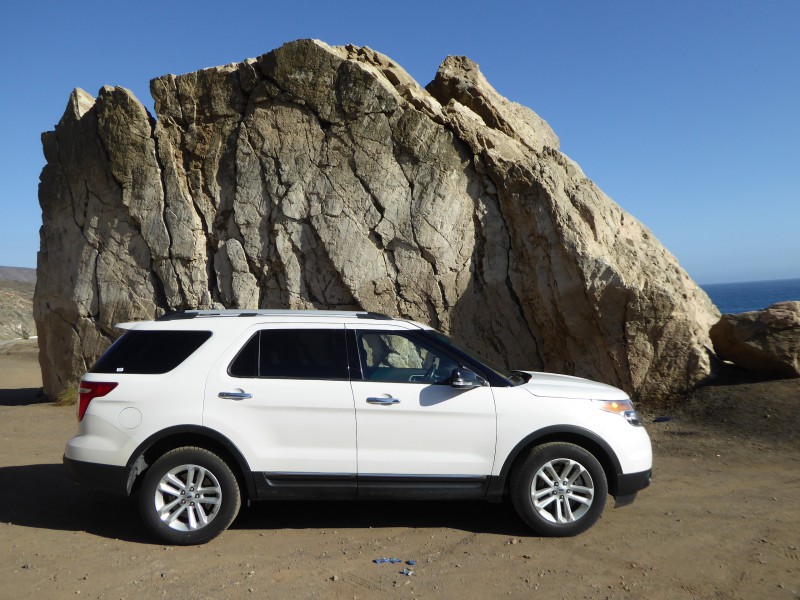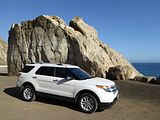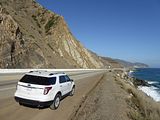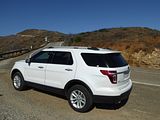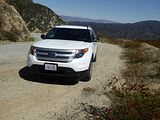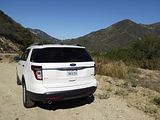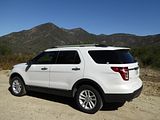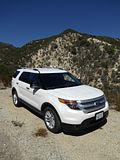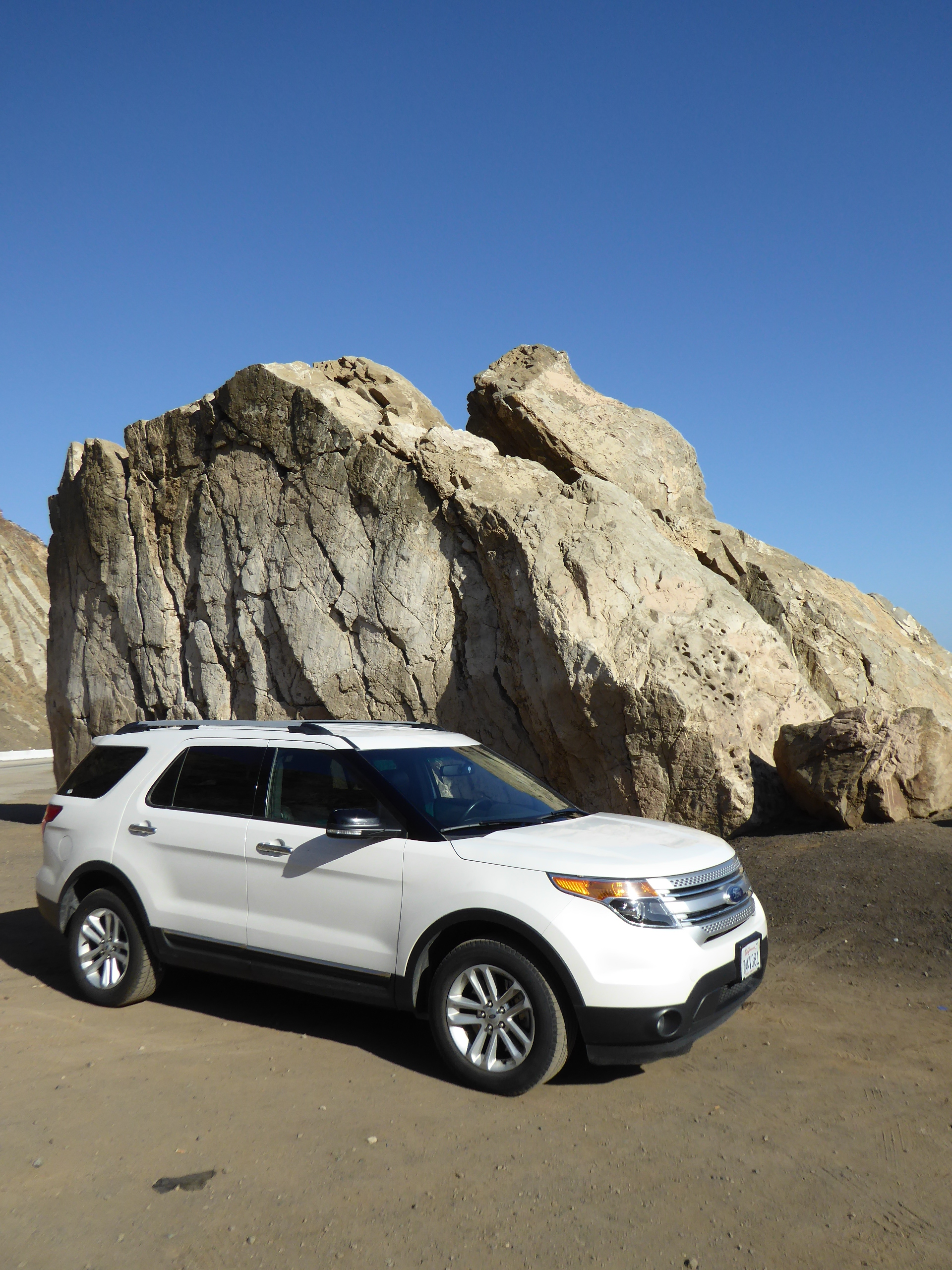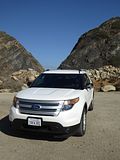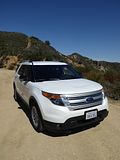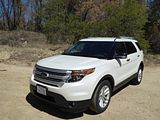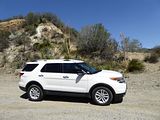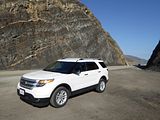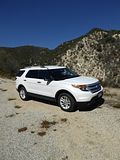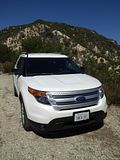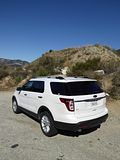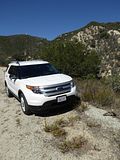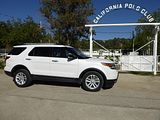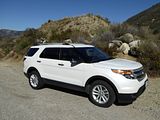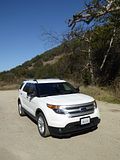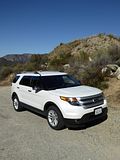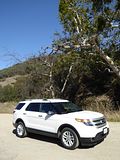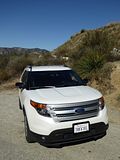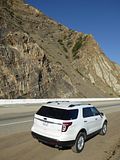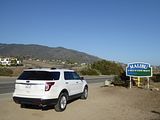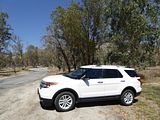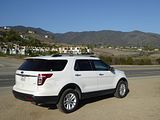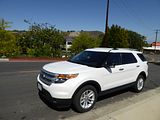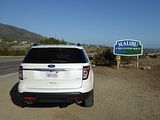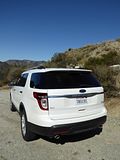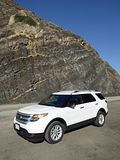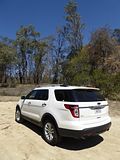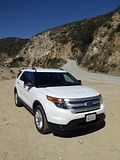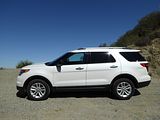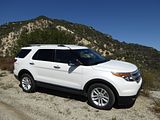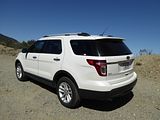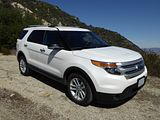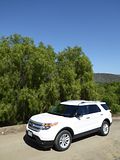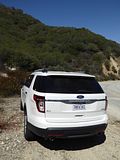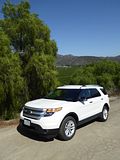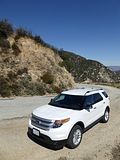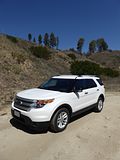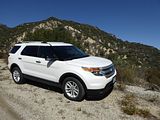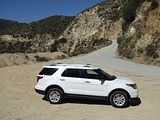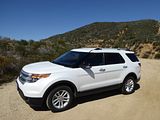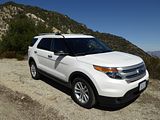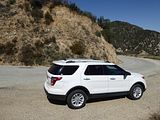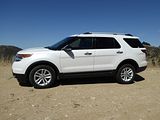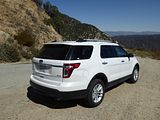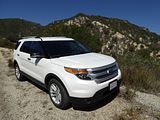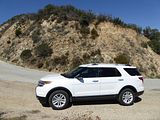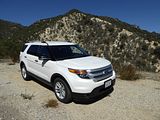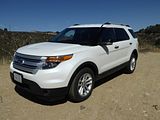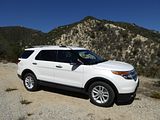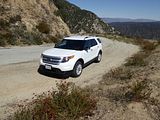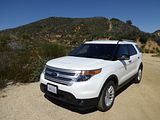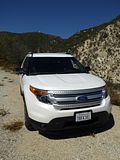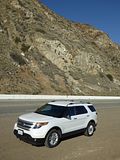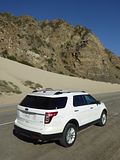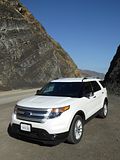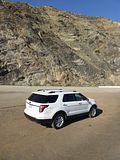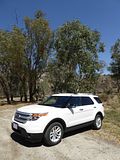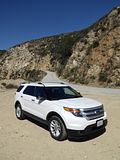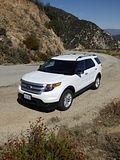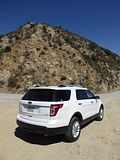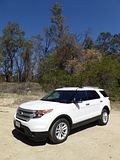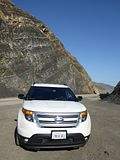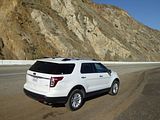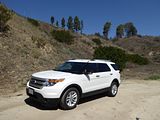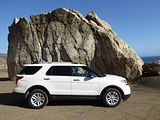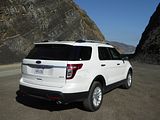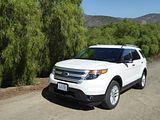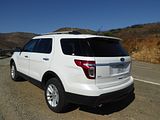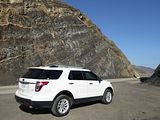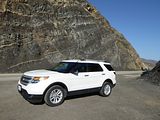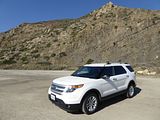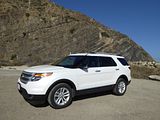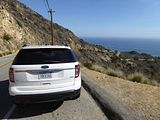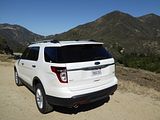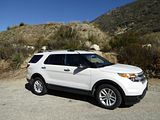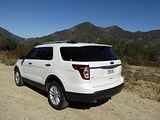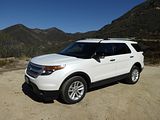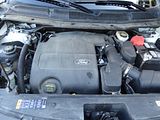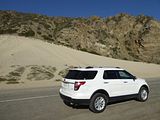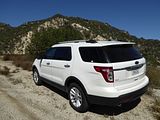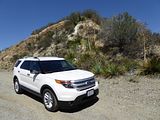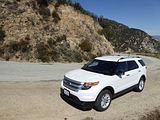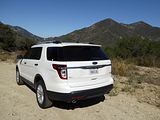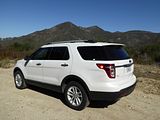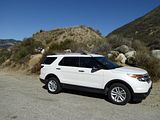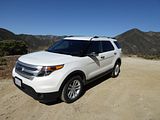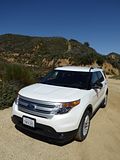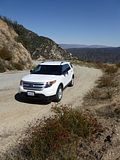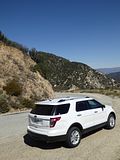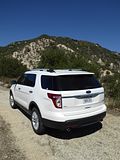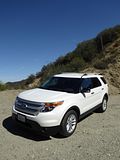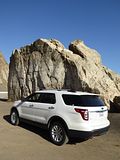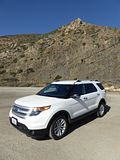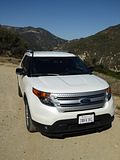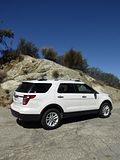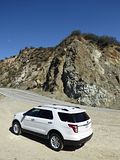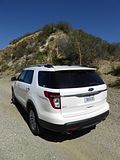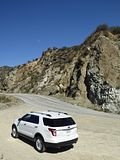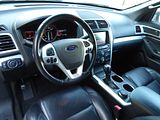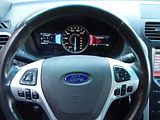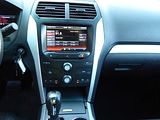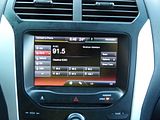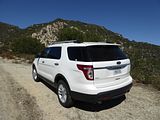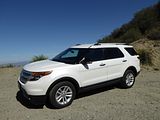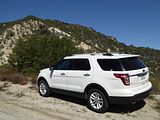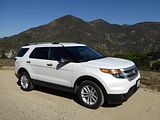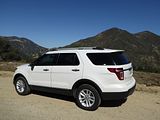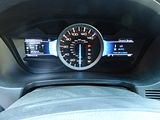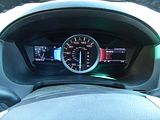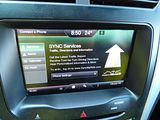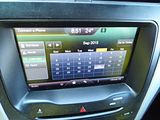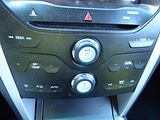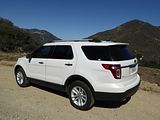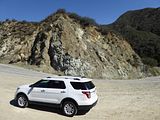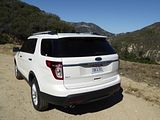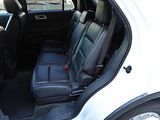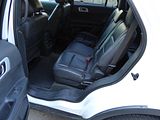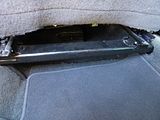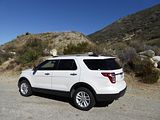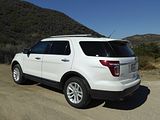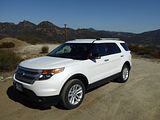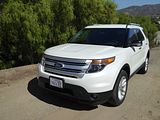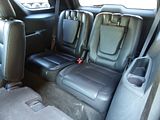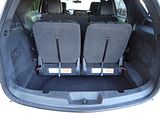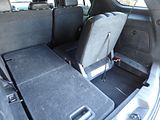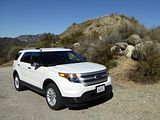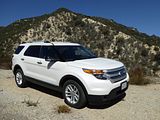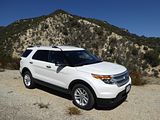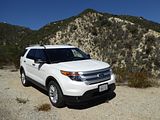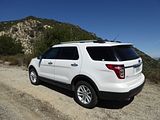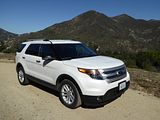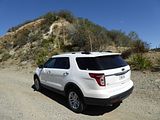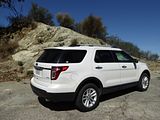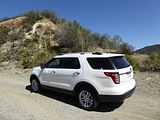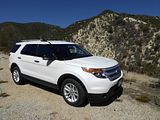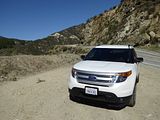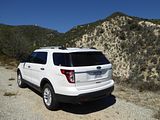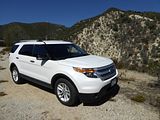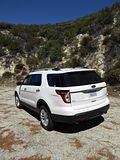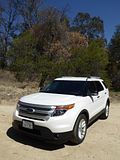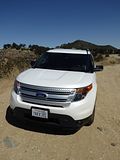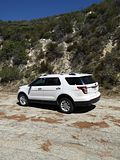Since its inception in 1990, Ford have sold over 7 million examples of the Explorer, making it the best-selling SUV of all. It’s been not without its controversy, though, even if you ignore more general sentiment levelled at these type of vehicles, In the 1990s, the model was at the centre of a very public debate over its safety with Firestone tyres fitted. In May 2000, the US National Highway Traffic Safety Administration (NHTSA) contacted Ford and Firestone about a higher than normal incidence of tire failures on Ford Explorers, Mercury Mountaineers, and Mazda Navajos fitted with Firestone tires, all of which involved tread separation, where the outer tread carcass would delaminate and cause a rapid loss of tire pressure. When this had occurred, the Explorer and its stablemates and been found far more likely to rollover, and there had been a large number of deaths and catastrophic injuries as a result. Although the tyres seemed to be the root cause of the problem, as tests with Goodyears showed no roll-over issues, and Ford worked to identify a solution in advance of replacing all 13 million Firestone tyres on the model, the damage was done, even sales of the model remained very buoyant whilst this was all being resolved. And then in December 22, 2003, U-Haul, the largest American equipment rental company, announced it would prohibit its outlets from renting trailers to persons planning to tow behind Ford Explorers due to liability concerns, with no published data to substantiate the claim. It turned out that this prohibition was due to the rear bumper separating from the vehicle, including the tow hook assembly and U-Haul did not alter its policies regarding the renting of trailers to those planning to tow behind the similar Mercury Mountaineer, Mazda Navajo or earlier versions of the Lincoln Aviator. At a personal level, the last Explorer that I tested was one of those vehicles which so alarmed me, that I made sure I never rented another one. It was the appalling brake performance in the wet, coupled with very insecure feeling handling when you tried to take a bend at even very moderate speed which caused me to make this promise to myself. The first Explorer models were based on the platform of the Ranger pickup, and featured 3 or 5 door bodies and optional All Wheel Drive. The formula was an instant success, offering a winning combination of toughness, versatility, off-road capability and enough creature comforts that you could drive long distances on the freeway without undue issue. A second generation model was launched in 1995, and this had independent front suspension, aimed at improving comfort levels, and by now sales really took off, with around 400,000 units a year being sold. The third generation came in 2002, and this one had independent rear suspension as well for the 5 door models, and was the first Explorer with a third row of seats, increasing passenger capacity to 7. The fourth generation was available for the 2006 model year, and this sat on a new chassis frame. It was larger than its predecessors, to make space for the new Crossover Utility Vehicle that had been added to Ford’s range, the Freestyle, which was positioned to sit between the Explorer SUV and the compact Ford Escape CUV. New equipment features made the car more civilised, even if my own experience suggested that you needed to be very aware that this vehicle did not drive like a regular car or even a Crossover.
All that would change with the fifth Explorer, the current one. Looking not unlike a production version of the Explorer America concept which had been shown at the 2008 Detroit Show, the 2011 Explorer featured a unibody structure based on Ford’s Volvo-derived D4 platform. The styling was very different, too, with blacked-out A, B, and D-pillars to produce a floating roof effect similar to Land Rover’s floating roof design used on its sport utility vehicles, sculpted body work with stepped style headlamps similar to the Flex, Edge, Escape, Expedition and F-150, as well as new stepped style tail lamps. The grille features Ford’s corporate three-bar design with upper and lower perforated mesh work, similar to that of the sixth-generation Ford Taurus. Many commented that it looked not unlike some of the products made by Land-Rover, and this is perhaps not a coincidence, as development of this Explorer was led by chief engineer Jim Holland, who was also a chief engineer for Land Rover, heading development of the L322 2005 facelift of the Range Rover.
Whilst sales of the Explorer are nowhere near those heady days of 400,000 units a year, they have more than doubled with this model, and are growing every year again. From a low point of 52,190 in 2009 with the old model, they reached almost 190,000 units in 2014. Many US police forces have taken the Explorer onto their fleets to replace their venerable Crown Victoria patrol cars, so clearly there must be something about this Explorer to justify that level of endorsement. I’ve waited a long time to find out for myself, as there are surprisingly few of them in the Hertz fleet, but finally I spotted one that was available to rent. It turned out to be a 2013 model, first plated in June of that year, so it had endured 27 months of rental duty, and the odometer was showing 58,000 miles. Apart from a few scratches around the tailgate, and some rather creased leather seats, it appeared to be in a decent state, though. Only when I was a few miles down the road did I discover that the rear view mirror vibrated badly, making it all but unusable apart from at slow speeds and on very smooth roads. The problem seemed to be the anchorage on the screen not being firm enough, and my suspicion is that this car had received a new windscreen (the labels on the glass did not match those on the side windows). I have to assume that this was a one-off.
This generation of Explorer came with smaller engines than its predecessors, including the option of a 4 cylinder 2 litre Ecoboost unit. That was not in the test car, which had the regular 3.5 litre V6, which puts out 290 bhp, and which is coupled to a 6 speed automatic gearbox. You can buy a front wheel drive Explorer, but this one was an AWD, with a badge on the boot and the presence of a selector on the centre console making it obvious that this was the case. The unibody may be lighter than the old body-on-frame construction, but this is still a heavy machine, so 290 bhp is not as much as it might sound when it comes to making it go. It is adequate, though. The engine is smooth, and it is willing, and decently refined, so in ordinary motoring, it is perfectly acceptable. You will have to rev it hard to get brisk acceleration, but it is well up to the challenge, and the gear ratios seem well chosen for the purpose. The gearchange itself is very smooth. There is a manual capability offered with a small button to change up and down in the side of the top of the lever.
I took the Explorer on a couple of tougher challenges: up over the Little Tujunga Canyon road, which has moderately steep sections, and some swooping bends; and on route 23, from Westlake, south over the Malibu Hills down to the PCH. This is far steeper and the bends are far tighter, as well as the road being narrow and having more traffic than the Tujunga Canyon, so more of a test. It was hard work, for sure, but the Explorer did far better than most large SUVs would. Not only that, but I would say that it verged almost on the fun to drive. That is because unlike its predecessor, which was dire in the bends, this one is really rather good. Not only does it have the excellence of steering feel that you get in smaller models bearing the Blue Oval, but the handling and grip seemed very good, allowing me to tackle these roads with gusto rather than caution. There is some roll, and if pushed hard, the Explorer will start to understeer, but I found I could enjoy this machine in a way I was not really expecting. There is a price to pay, and that is at the fuel pump. Having driven 204 miles, I had to put in exactly 11 gallons of fuel to fill it. That gives an average for the day of just 18.5 mpg US or 22.15 mpg Imperial. Those are not very good figures and are one reason why Ford offered the more economical 2 litre Ecoboost as an alternative. The improvements to the brakes were not quite so startling. I did not get to test them in the wet, which is where they had alarmed before (as had the Taurus of similar vintage), but in the dry and extremely hot conditions of my test (it peaked at 42 degrees C!), they seemed much better. You did need to apply quite firm pedal pressure for anything other than a very gentle stop, but apart from this, they seemed fine, and pulled the Ford up as required. A foot operated parking brake features. The test car was on 245/60 18″ (not Firestone!) tyres, which are not as large as you might expect in a car like this, and clearly quite high profile by today’s standards. This fact along with the excellence of the suspension means that the Explorer rides nicely, coping well with the various bumps and ridges on Southern California’s streets. Combine this with low noise levels, and you have a relaxed cruiser, something which you could not really say about its predecessor. It’s easy to see out of, too. Ignoring that rear view mirror issue, which I am sure was a one-off, there are very large door mirrors, which have Ford’s simple anti-blind spot solution of a second piece of glass with a different field of view in the outermost part of the mirror, and there is a rear-view camera which projects a clear image onto the audio unit screen, all of which help you to position the car with precision.
You can tell that the Explorer’s interior was done by a different design team than the one who did the latest Focus or Escape/Kuga. These latter have a rather cheap look to them, and a profusion of buttons and switches that makes the interiors look a mess, whereas the philosophy applied here is to simplify as much as possible. Surprisingly, it is the European Ford interiors which are the sub-par ones these days, with cheap and tawdry looking materials applied to try to make them look premium, whereas the US ones are actually pretty good. Nicely textured plastics that feel moderately soft to the touch are used for the dashboard and door casings, with leather trim applied to the armrests on the doors. There is a small inlay of a textured silvery grey in front of the passenger and surrounding the upper speakers on the doors that wraps onto the edge of the dash, as well as some different shade of silver grey inlays around the steering wheel boss and audio unit. It looks neat and well done.
The instrument, and there is only one as a permanent display, is electronic and sits in the middle of the display area under a curved cowl. It is a large speedometer unit, with a blue ring in the middle, which is pleasing on the eyes. With large markings, it is easy to read. Sitting on either side of it are areas where you choose what you want displayed by selecting from a series of menus that you cycle through on the respective button pads of each steering wheel spoke. On the left, you can bring up a rev counter, and there is a vertically stacked fuel gauge, or you can show other information, from fuel range and average consumption, to vehicle alerts and service data. The right hand one shows details of the audio unit selection (and other things like navigation if that is fitted). The centre of the dash contains the touch sensitive colour screen for the MySync unit. This has four categories of selection from the Home menu: Audio, Climate, Phone and Information. Moving between the options by touching the screen is easy, though allegedly there you can do it by voice command as well. Below this unit are touch pads for some of the most common functions, such as channel selection for the audio unit and some climate control settings. Two large knobs are used to turn the audio volume on/off and up/down as well as the climate control. It is all pleasingly restrained, and works quite well. Other things that you need are operated from the twin column stalks: indicators on the left, front and rear wash/wiper on the right. The lights operate from a rotary dial on the left of the dash. There are some more buttons on the steering wheel hub, for cruise control and bluetooth.
The previous generation Explorer had running boards to ease ingress. This one does not. And nor, really, does it need them. You are aware that you are getting into something that bit higher off the ground than a regular car, but even for someone with my short legs, it is not hard to get in and out. Once there, seat adjustment for the driver is all electric, with switches on the side of the seat for this purpose. There is an electric lumbar adjustment as well. Even with this at one extreme of its settings, there was not that much support for the small of my back. The seat, nicely trimmed in leather, thought it was looking a bit creased on the bolsters, proved a bit flat and shapeless. The seat belt holds you in place well, but I could not help wonder how comfortable you would feel after sitting on them for many hours. At least the driving position was good, with a tilt and telescoping steering wheel fitted. The front passenger gets a mixture of electric and manual adjustment for their seat, with fore/aft assisted, but the backrest rake and height done with manual levers. Those in the middle row of seats get some adjustment, too. The seats are on a slider, so you can move them back and forth, and there is a limited range of possibilities for backrest angle. Even with the front seat set well back, unless you put this seat well forward, there is ample legroom, and thanks to the CUV styling, headroom is plentiful. There is not much of a bump in the floor for the prop shaft, and with plenty of width, three could sit across this back seat quite easily. There are separate controls for the air conditioning on the rear face of the centre console unit, along with a pair of cupholders, and there are air vents in the roof. There is no central armrest, and there is a hard metal bar which goes under the back of the front seats (they are mounted on it), which you will need to avoid.
I did try out the rear most row of seats, as well. Getting in and out is not too easy. The middle row of seats tip forward out of the way, in a two stage process where you drop the backrest on the cushion, then pull the whole seat up. It is still quite awkward clambering in. but once installed, I was surprised to find that there was enough space for me. Legroom was OK, and the seat is high enough that you do not have your knees on your chin, but high that you run out of headroom. There are just two seats here. but moderately sized adults could definitely use them. Occupants here get their own vents in the roof, and there are cupholders and oddments trays on the side mouldings of the seats. With all rows of seats erect, there is not a lot of luggage space. It is deep, but not exactly extensive from back to front. This might be when you would need to use the roof – rails are standard – are the towing capability of the Ford. Dropping the rearmost seats is easy. There are series of marked items to pull, which firstly lower the headrest, then drop the backrest onto the cushion, before you pull the whole seat backwards towards the rear of the car and so it slots down into the well at what was the boot area, creating a floor now flush with the bottom of the tailgate. The rear seats fold individually, so you could carry 6 and have quite a lot of luggage space. Fold down both of the third row and you have a lot of cargo room. Fold down the middle row as well, and the area is vast. It might not be as big as the GM Lambda vehicles (Traverse, Acadia and Enclave), but it is still pretty capacious. Inside the cabin, there is a massive glove box, good sized door bins on all four doors, a cubby under the central armrest, a lidded cubby infront of the gearlever which also contains the USB. iPod and AUX ports and rear seat passengers get pockets in the back of the front seats.
New for 2013 was a Sport version of the Explorer. This joined the existing Base, XLT and Limited models. The Sport only has AWD, whereas the others were all offered with a choice of RWD or AWD, at a cost of $2000. Front wheel drive models are offered with the 240 bhp 2 litre turbocharged Ecoboost engine as an option. Starting at just $29,100, the Base model has all the essentials, but lacks a few of the creature comforts that buyers of this class of vehicle would probably expect. So it has the 7 seats, cruise control, air conditioning including to the rear seats, an AM/FM Radio with CD slot, MP and AUX ports with wheel mounted controls and a power adjustable driver’s seat, but you are on steel wheels and you do not get the MyTouch system. The $32,680 XLT adds 18″ alloys, front fog lights, tan alarm, auto headlights, rear parking aid, a leather wrapped steering wheel, heated mirrors, an upgraded audio unit with XM Satellite radio and Bluetooth, Ford MyTouch, power adjustment for the passenger seat and lumbar support on both front seats. Several of the items on the test car were options on the XLT, including the leather seats, seat heaters and the rear-view camera. The $38,100 Limited adds these as well as keyless starting, seat and mirror memories, navigation, a further upgraded audio unit with HD radio and a 12 speaker Sony premium sound system. Costing $40,780, the Sport is recognised by its blacked out trim, privacy glass, rear spoiler and 20″ alloy wheels. It comes only with AWD and a turbocharged version of the 3.5 litre V6 which generates 365 bhp.
I was not sure whether I was going to like the Explorer. When it was launched, the US motoring press were not that kind to it, generally calling it a disappointment, and putting it close to, or at the bottom end of their rankings. I frequently disagree with the perceived wisdom of a motoring press who seem to have their own criteria for evaluating cars which place undue emphasis on things that give them an adrenaline rush when they play on a track, so it is no surprise to discover that this is a far better vehicle than they would have had me believe. Indeed, I rather enjoyed it. It is big, but if you are buying a car of this type, that’s the whole point, and whilst it may not be as commodious as a Traverse, it is doubtless roomy enough. It is nicely finished inside, and even the Ford MyTouch did not irritate me as it has done in other recent Ford models, and above all, it was really quite good to drive on bendy roads. Far from putting it on my “never again” list, I would welcome the chance to get behind the wheel again. Refreshed 2016 models, with new front end styling and a series of mechanical and trim changes are just filtering into the dealers and onto the roads. Let’s hope that Hertz buys some, so I can try one.

